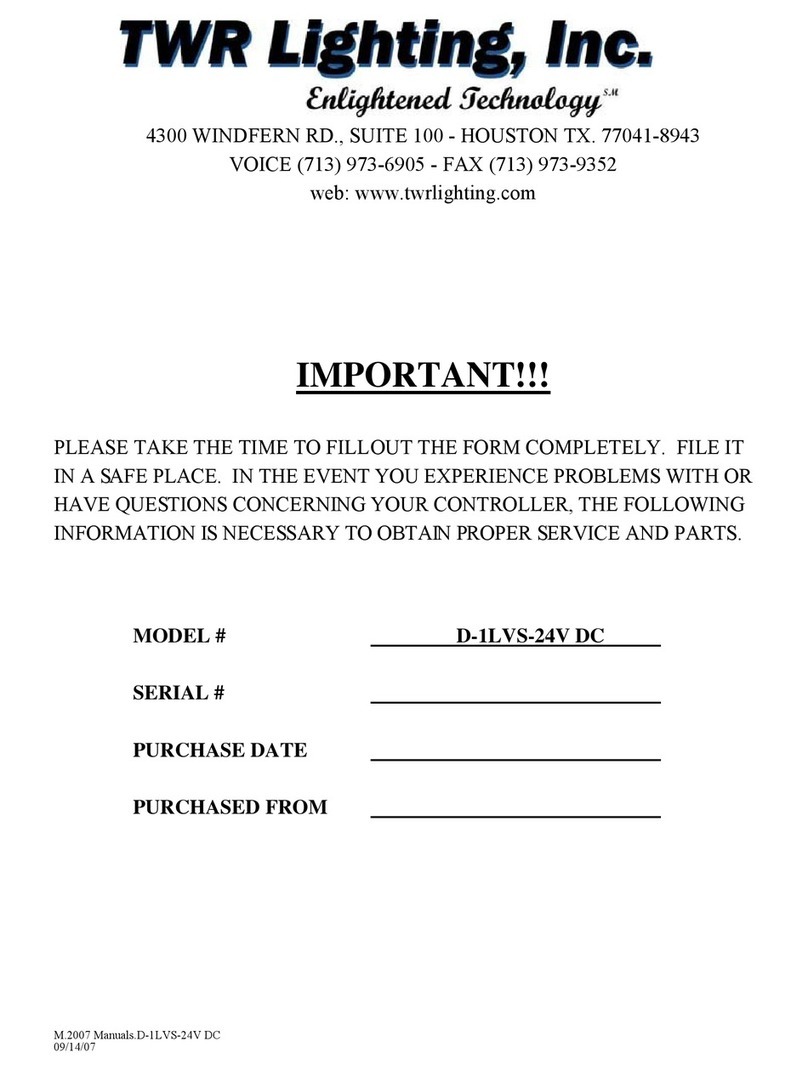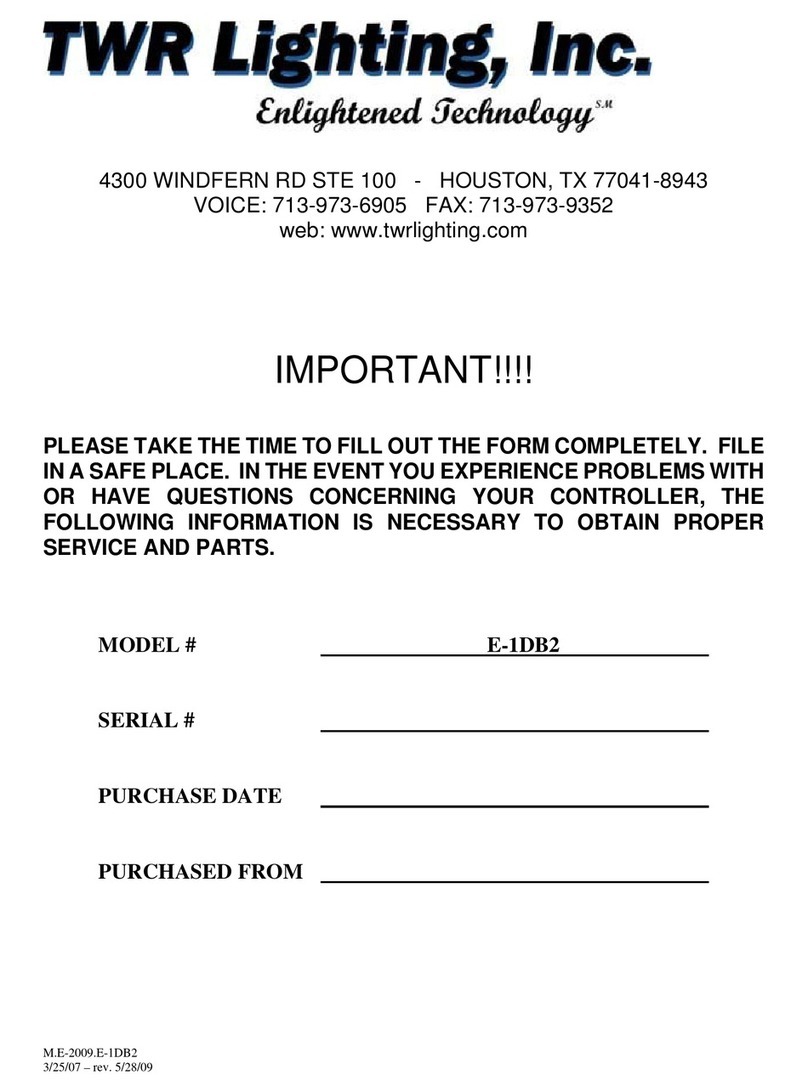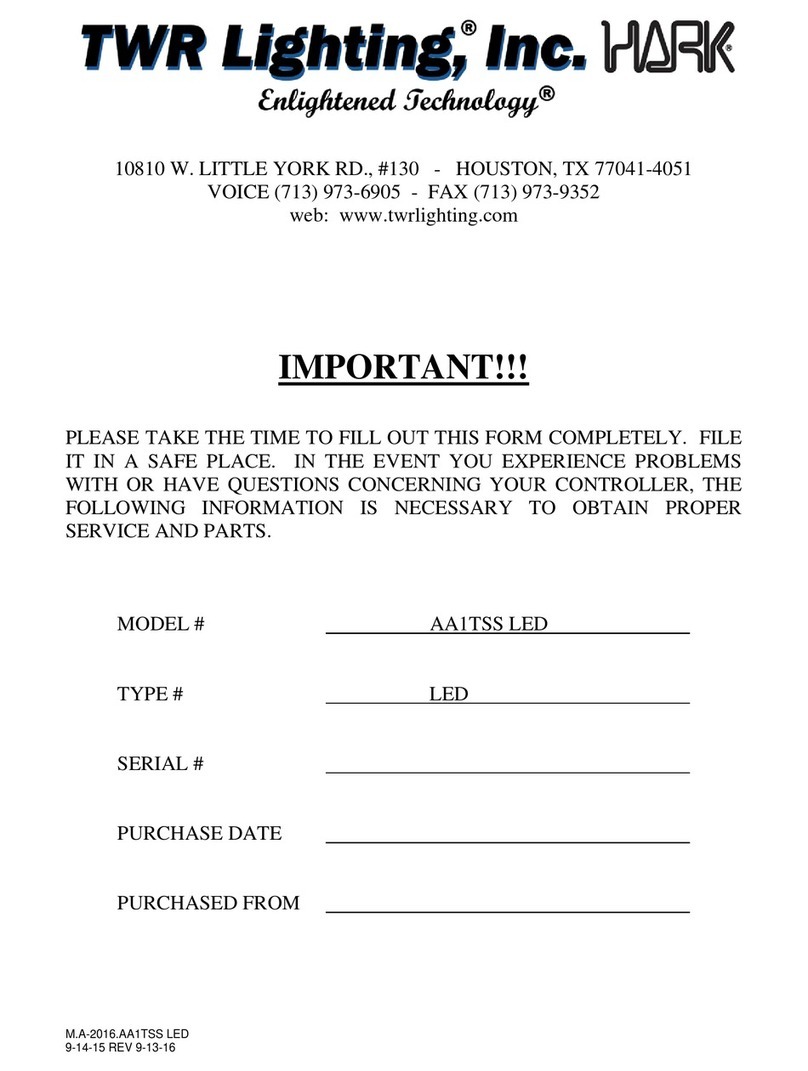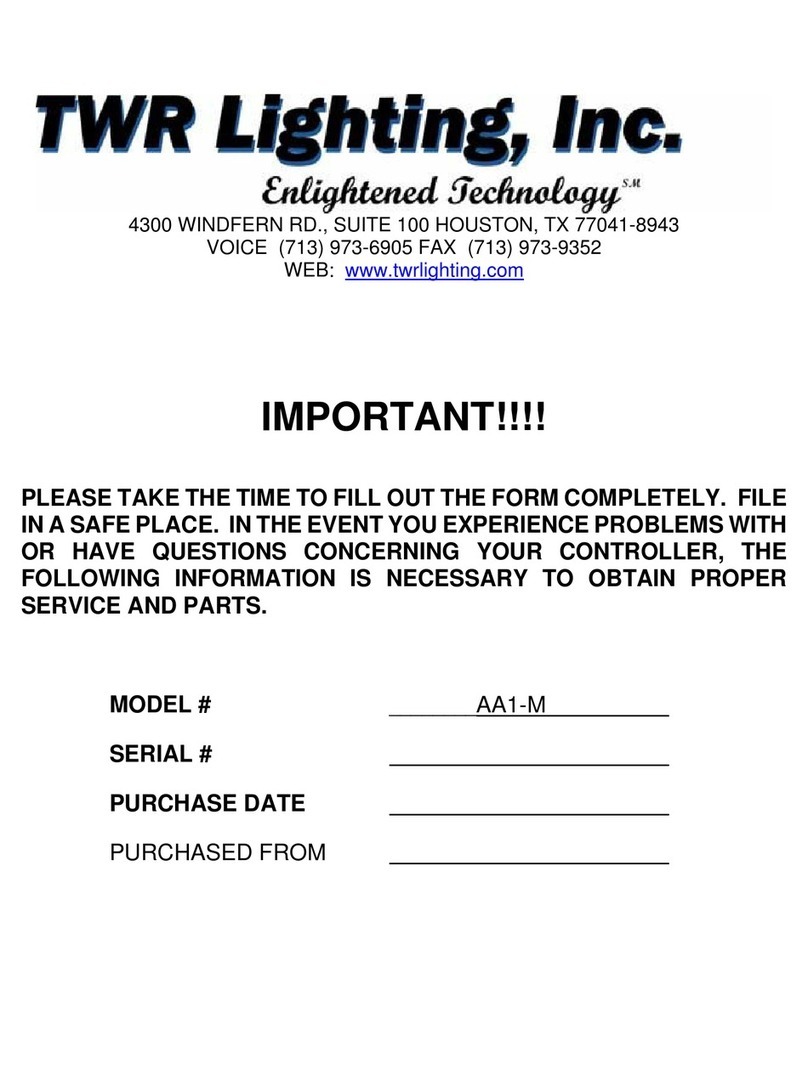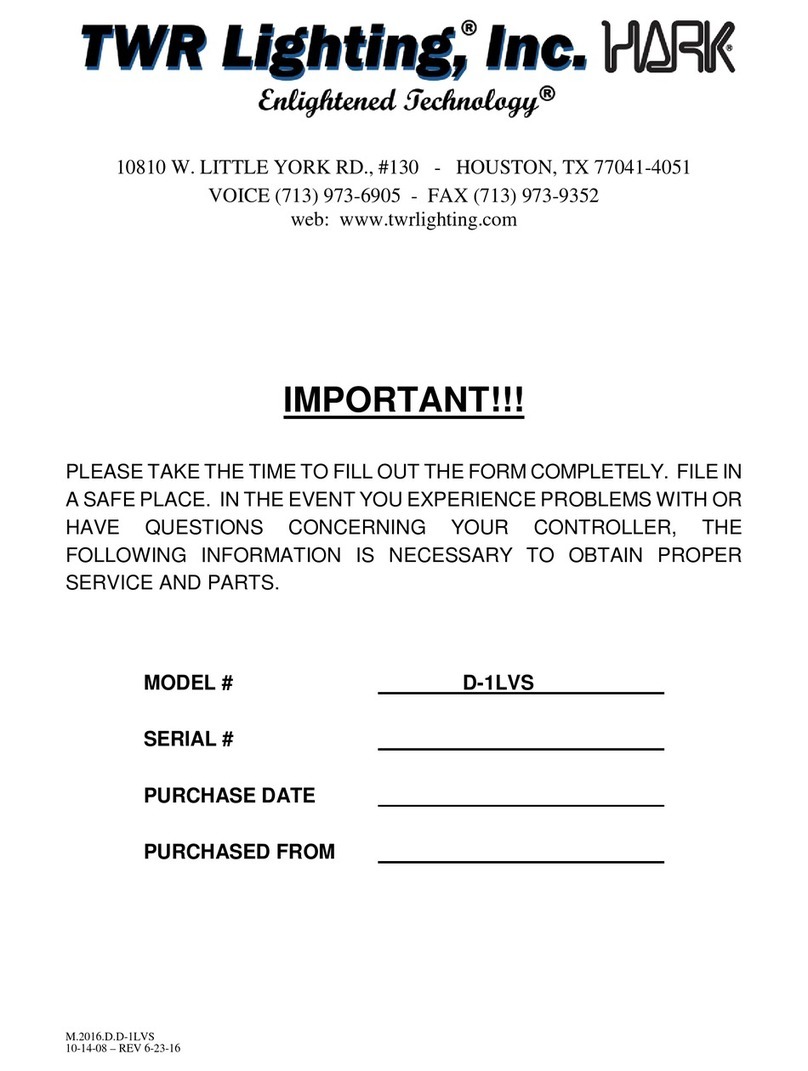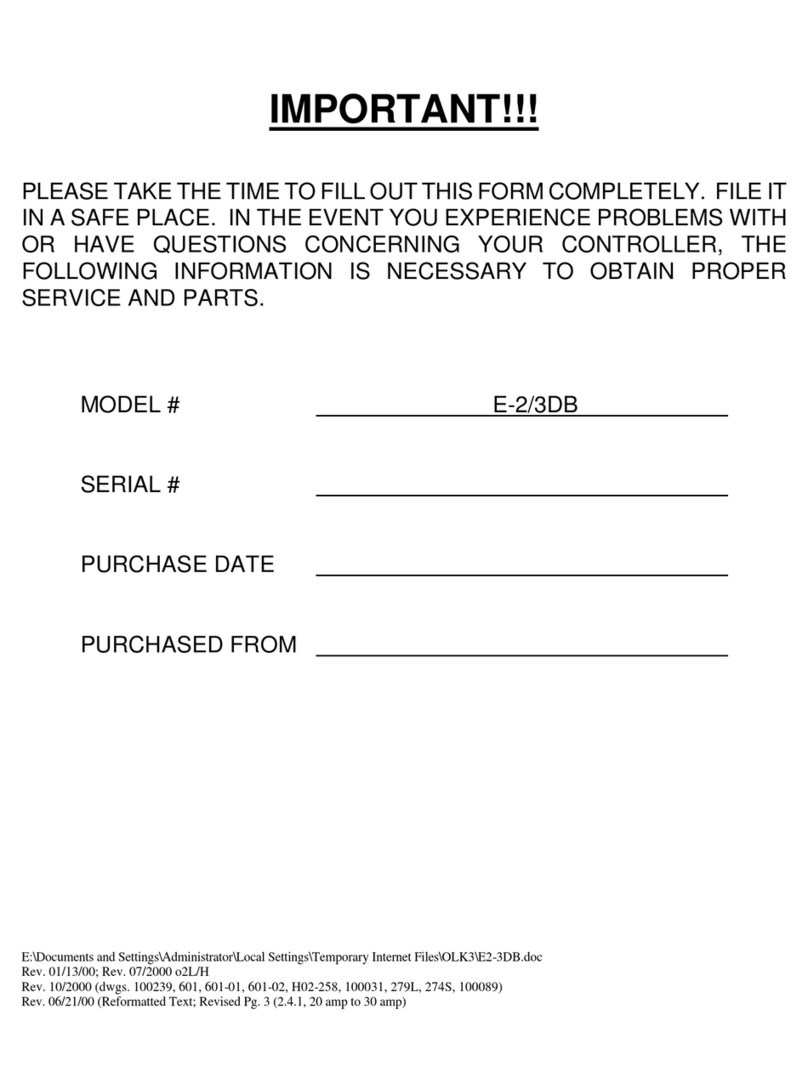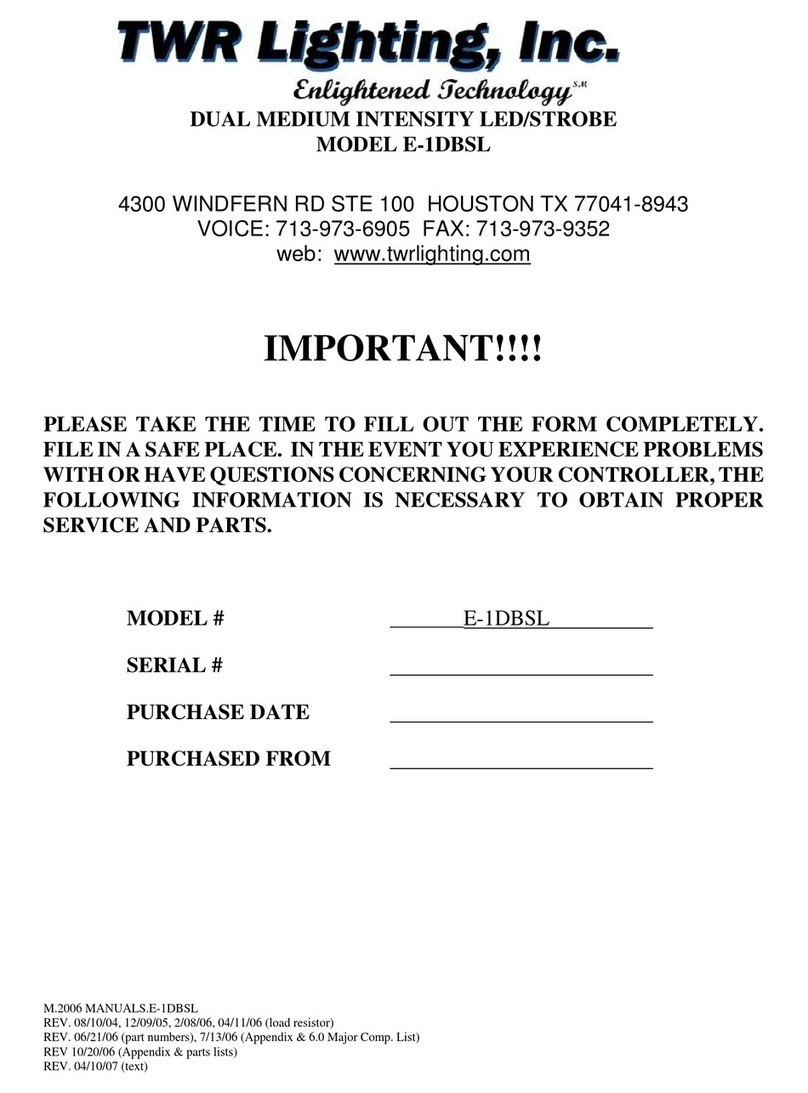
DUAL MEDIUM INTENSITY STROBE
MODEL E-1DB
C:\Documents and Settings\esalazar\Local Settings\Temporary Internet Files\OLK1\E-1DB Rev 10 06 03.doc
12/1997, Rev. 04/13/1998 (Dwgs. Revised) Rev. 07/6/1999, Rev. 01/13/2000
Rev. 07/2000 (o2 L/H), Rev. 10/17/2000 (Retyped)
Rev 03/28/03 (Removed #600-02)
TABLE OF CONTENTS
1.0 INTRODUCTION...............................................................................................................1
1.1 APPLICATION.......................................................................................................1
1.2 SPECIFICATIONS OF EQUIPMENT....................................................................1
2.0 INSTALLATION ................................................................................................................2
2.1 POWER SUPPLY CONTROL CABINET MOUNTING..........................................2
2.2 PHOTOCELL HOUSING.......................................................................................2
2.3 PHOTOCELL WIRING ..........................................................................................2
2.4 POWER WIRING...................................................................................................3
2.5 TOWER LIGHTING KIT.........................................................................................3
2.5.1 Beacon Mounting and Wiring..................................................................4
2.5.2 Lighting Kit Wiring...................................................................................5
2.6 ALARM WIRING....................................................................................................6
2.6.1 White Strobe Failure (SF)……………………………………………………..6
2.6.2 Red Strobe Failure (RF) .........................................................................6
2.6.3 Power Failure (PF)..................................................................................6
2.6.4 Photocell (PC).........................................................................................6
2.6.5 Sidelight Alarm (SA) ...............................................................................7
2.7 ALARM TESTING..................................................................................................7
2.7.1 White Strobe Failure (SF).......................................................................7
2.7.2 Red Strobe Failure (RF) .........................................................................7
2.7.3 Power Failure (PF)..................................................................................7
2.7.4 Photocell (PC).........................................................................................7
2.7.5 Sidelight Alarm (SA) ...............................................................................7
2.8 CONTROLLER CONFIGURATION.......................................................................8
3.0 THEORY OF OPERATION...............................................................................................9
3.1 THE POWER SUPPLY..........................................................................................9
3.2 THE FLASHTUBE.................................................................................................9
3.3 TIMING CIRCUIT ................................................................................................10
3.4 TRIGGER CIRCUIT.............................................................................................10
3.5 ALARM CIRCUITS..............................................................................................10
3.5.1 White Strobe Failure (SF).....................................................................10
3.5.2 Red Strobe Failure (RF) .......................................................................10
3.5.3 Power Failure (PF)................................................................................10
3.5.4 Photocell (PC).......................................................................................11
